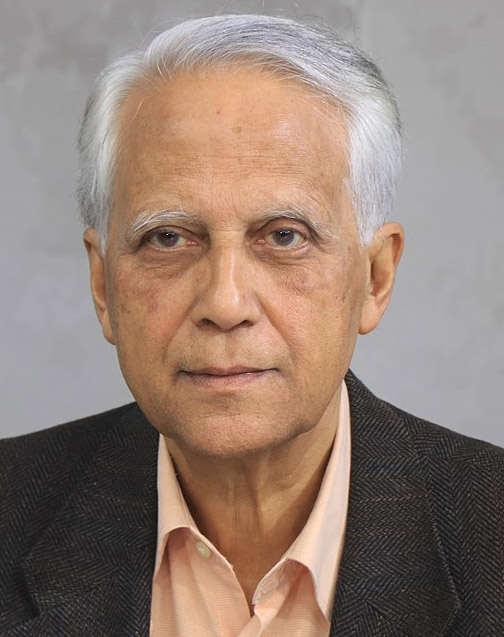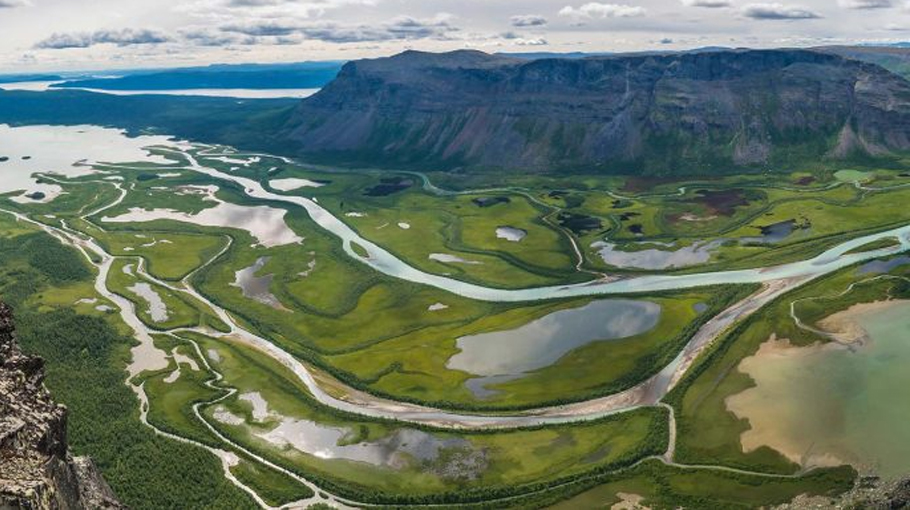Tackling environmental issues including joint management of river basins and biodiversity

The Meghna River Basin is significant to both Bangladesh and India as it supports the livelihoods of almost 50 million people. The area is also considerably large — almost twice the size of Switzerland — with 47,000 km2 of the basin located in India and 35,000 km2 located downstream in Bangladesh. One must remember however that benefit sharing goes beyond the mere sharing of water resources. It includes equitably dividing the goods, products and services connected to the watercourse.
Close to 90 percent of the forest or watershed of the Meghna river basin is located in India and is the source of river water flowing downstream into Bangladesh. For example, the Meghalaya plateau in India is rich in forests and is the source of many transboundary tributaries of the Meghna river system, such as the Umngot and the Myntdu, flowing from Jaintia hills into the haor region of Bangladesh, known for numerous wetlands of considerable areal extent representing important sites for fish breeding.
But what happens upstream, affects downstream. This can be seen in the nearly 6 million tonnes of sediment that flows from the Indian side of the basin, down to Bangladesh’s haor region which creates problems for the management of these wetlands.
Climatologist R. Amin has consequently correctly observed “the benefit sharing approach to water dialogue will allow the two countries to engage in joint management of the forest and wetlands. The natural infrastructure of the Meghna Basin is critical for the maintenance of its hydrology.” This has led analysts to indicate that Bangladesh and India can discuss ways to jointly manage the forest of the basin for improving flood and silt management — two main challenges that affect the productivity of the fisheries and agriculture sector in the Surma-Kushiyara region in the Upper Meghna Basin in Bangladesh. It needs to be remembered at this point that the fortunes of rice farmers of the haor also impacts Bangladesh’s food security as their rice production constitutes 20 percent of the country’s total rice production.
As such, very correctly, the IUCN undertook a dialogue of benefit sharing for the Meghna River Basin as part of a larger project by IUCN called Building River Dialogue and Governance in the Ganges-Brahmaputra-Meghna river basins (BRIDGE GBM), funded by the Swedish International Development Cooperation Agency (SIDA) through the Oxfam Transboundary Rivers of South Asia (TROSA) programme.
The IUCN’s efforts have also been directed towards a more successful balancing and sharing of the water flow in the Ganges–Brahmaputra–Meghna or GBM delta. This gained immediate attention as this involved a transboundary river system that traverses the five countries of Nepal, India, China, Bangladesh, and Bhutan. They identified priority areas, such as joint management of forest for flood and erosion control, development of transboundary navigation and ecotourism circuits where the countries can work jointly to enhance these benefits from the shared river basins.
In this context other environmentalist groups and climatologists reiterated that benefits from this exercise could be taken forward through certain steps- identifying stakeholders and potential equity issues, identifying and building benefit-enhancing scenarios, assessing and distributing benefits and costs, negotiating a benefit sharing agreement, and strengthening the institutional arrangement for the implementation of the agreement.
However, most unfortunately, this exercise has been facing challenges for the last two years because of socio-political reasons. One can only hope that we will be able to overcome them and find least common denominators so that all can benefit from this exercise.
We now need to focus on the climate negotiations that are getting more and more intense. Countries all over the world realize that the evolving ongoing climate negotiations have finally found relevance not only among policymakers but also among the masses thanks to new level of civic mobilization that is instrumental in creating a new global consciousness about the real perils of climate change.
One needs to recall the discussions and views that emanated from the discussions that took place during the observation of the World Environment Day 2021. The participants highlighted the linkages between the dangers of a world economy driven by carbon fossils and the repercussions that emissions stemming from them and other types of human activities are having on the planet’s biodiversity.
This subsequently resulted in particular focus on the urgency of “Ecosystem Restoration” that is seriously required for restoring, supporting and enhancing the planet’s different habitats in which life, of different forms and species, should supposedly abound and thrive rather than being at risk of extinction.
This resulted in general agreement that restoring ecosystems should be therefore seen as a rallying cry, a call for action, to ensure that biodiversity is required for a sustainable future under the banner of the Agenda 2030 and the Sustainable Development Goals (SDGs). Consequently, policy makers are right now under pressure to come up with bolder and stronger emission targets. This has resulted in most of the world feeling encouraged as to how a global leadership movement is emerging to tackle climate change.
Yet, many climatologists feel that despite so much discussions on climate change the global leaders still do not appear to have mustered the foresight and determination to truly lay out a long term agreed path for their countries to be be able to bridge the gap that separate discussions on climate change from those focused on the planet’s endangered biodiversity.
There was some consensus on this delicate issue during the COP 26 discussions and the Kunming meeting on Biological Diversity but it is clear that while ambitious carbon emissions targets are seen as essential for our survival, the need to elevate biodiversity to the same levels of attention and urgency has not as yet happened.
In this regard one needs to recall here what scientists said during their discussions in the Ninth Trondheim Conference on Biodiversity in 2019. They warned that “we are heading for fundamental change in Earth systems as a result of changes in the biosphere” and also stressed that “there are close links between the biodiversity and climate agendas, and it is well understood that a temperature rise of 1.5˚C will have impacts on biodiversity and ecosystem function and services”. The Kunming meeting also reiterated that it is vital for all of us to value biodiversity, conserve, restore and maintain ecosystem services sustaining a healthy planet and delivering benefits essentials for all people.
We need to remember that with the adoption of the 2030 Agenda for Sustainable Development, there is a need to consider how future biodiversity targets will not only relate to or compliment the Sustainable Development Goals but also the climate change agenda.
The UNEP in this regard has correctly observed that there is still an unexplored linkage between efforts on biodiversity and climate action. This has led environmentalists to remark that there is a need to seriously view the importance of nature-based solutions for climate change mitigation and adaptation and this is an area that is open for a global thinking and ideation process pertaining to reimagining different, more biodiverse and sustainable living settings. Such a scenario has resulted in a common urge that we should formulate a new narrative about biodiversity because at the end of the day it is a different side of the same coin and policy makers must be educated on strong linkages between climate change and biodiversity loss.
It will help if we create a new sense of awareness and urgency that tackling climate change requires the protection and expansion of our wealth expressed in biodiversity.
We have to reimagine our relationship with nature.
(Muhammad Zamir, a former Ambassador, is an analyst specialized in foreign affairs, right to information and good governance,
can be reached at <[email protected]>)


